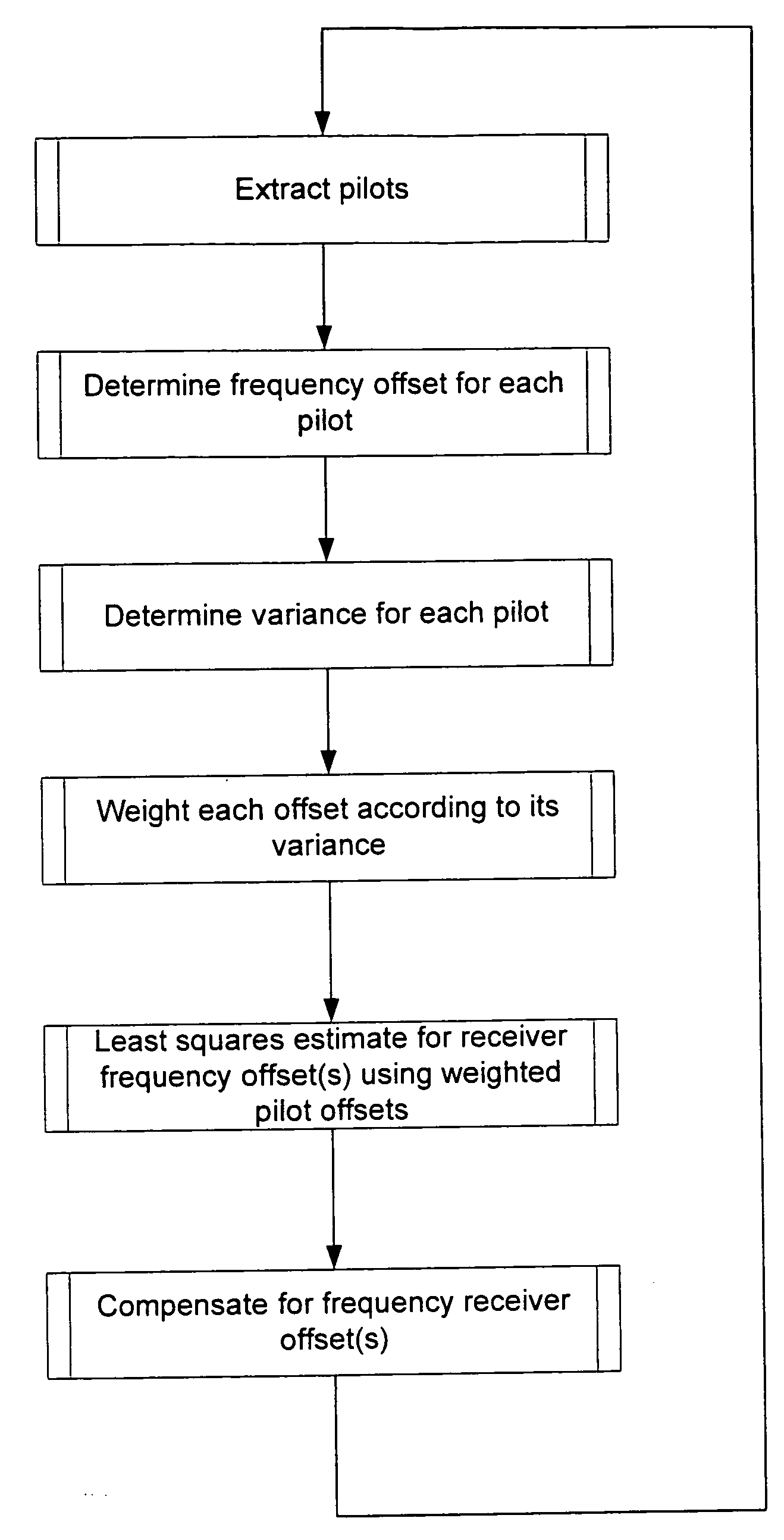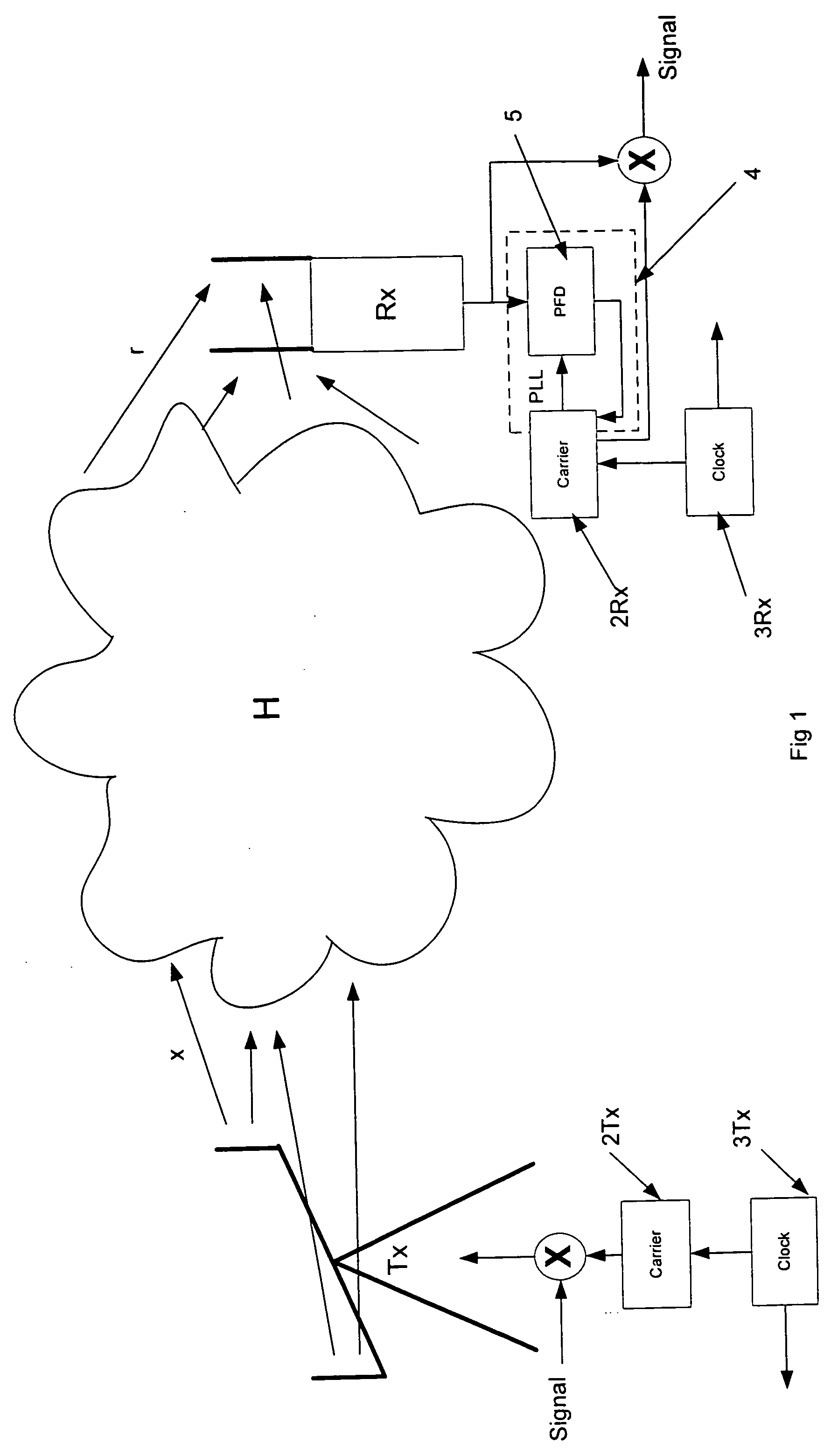Frequency offset tracking
- Summary
- Abstract
- Description
- Claims
- Application Information
AI Technical Summary
Benefits of technology
Problems solved by technology
Method used
Image
Examples
Embodiment Construction
[0033]FIG. 1 shows a wireless communications system having a transmitter Tx, a receiver Rx and an air interface channel H. At the transmitter an information signal or data is multiplied by a carrier frequency as is known, in order to produce symbols which are then transmitted. The carrier signal is generated by a local oscillator 2Tx, and the transmitter also comprises a local system clock 3Tx for use in other signal processing. The transmitted symbols x travel through the air interface channel H and are received by the receiver Rx as symbols r which have been modified by the effects of the channel H and noise. The received symbols r are then multiplied by the carrier frequency again in order to recover the original data signal.
[0034] The carrier signal is generated by a local oscillator 2Rx, and the receiver also comprises a local system clock 3Rx for use in other signal processing. Phase differences or lack of synchronicity between the transmitter and receiver can largely be reso...
PUM
 Login to View More
Login to View More Abstract
Description
Claims
Application Information
 Login to View More
Login to View More - R&D
- Intellectual Property
- Life Sciences
- Materials
- Tech Scout
- Unparalleled Data Quality
- Higher Quality Content
- 60% Fewer Hallucinations
Browse by: Latest US Patents, China's latest patents, Technical Efficacy Thesaurus, Application Domain, Technology Topic, Popular Technical Reports.
© 2025 PatSnap. All rights reserved.Legal|Privacy policy|Modern Slavery Act Transparency Statement|Sitemap|About US| Contact US: help@patsnap.com



